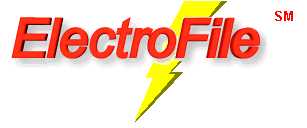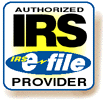


|
Income Tax Service |

|
Here are some timely tax tips. Thought you might like to see them and consider them for your 2009 tax planning.
Certainly, the "Cash for Clunkers" program is gathering a lot of attention currently. At the moment, I don't have any real information on the NC "Cash for Clunkers" program that has been proposed in the legislature recently.
If you have any questions, don't hesitate to contact your preparer here at ElectroFile Income Tax Service.
Terry Hough
ElectroFile Income Tax Service
Applies to: purchase of a primary residence before December 1, 2009.
Details: This fully refundable credit of up to $8,000 is available to those who purchase a home in 2009 and who have not owned a home in the previous three years. Unlike a $7,500 credit that was available in 2008, this year's credit does not have to be paid back. You can claim the new credit on your 2009 return, to be filed by April 15, 2010, or -- if you want the cash sooner -- on the 2008 return that was due this year.
If you've already filed last year's return, you can file an amended return to get the money.
To learn more: Read the Internal Revenue Service's First-Time Homebuyer Credit Questions and Answers: Homes Purchased in 2009
Applies to: purchases of new cars between February 17 and December 31, 2009.
Details: You may be able to deduct state and local sales and excise taxes paid on the purchase of new cars, light trucks, motor homes and motorcycles. In states with no sales tax, you may be able to deduct other taxes and fees. You can add the deduction to the amount of your standard deduction or take it as an itemized deduction if you are not electing to take the state and local general sales tax deduction (see below).
The deduction is phased out for joint filers with modified adjusted gross income between $250,000 and $260,000 and other taxpayers with modified AGI between $125,000 and $135,000.
If the vehicle costs more than $49,500, you can deduct the tax only up to that amount.
To learn more: Read the IRS' Seven Facts About the New Tax Deduction for Vehicle Purchases and Special Tax Break on New Car Purchases Available in States With No Sales Tax .
Applies to: vehicles that get 18 miles per gallon or less (as rated on www.fueleconomy.gov ) that are traded in for the purchase or lease of a new vehicle before November 1, 2009, or when the rebate funds run out, whichever comes first.
Details: To get a rebate of up to $4,500, you must have owned your clunker (had it registered and insured) for at least a year on the trade-in date, and the car must be less than 25 years old. The dealer will apply the appropriate rebate to your purchase or lease of a new replacement vehicle.
To learn more: Full details of the program are expected to be announced around July 23rd, according to the official Car Allowance Rebate System site .
Applies to: taxpayers who don't qualify to itemize their deductions but who pay state or local real-estate taxes.
Details: You can add an amount to your standard deduction equal to the amount of property taxes paid this year, up to $500 for single filers and $1,000 for joint filers. The deduction applies to property taxes based on assessed value. Local benefit assessments for street improvements, sidewalks and sewer lines typically can't be deducted.
To learn more: Read the IRS' Additional Standard Deduction for Real Estate Taxes .
Applies to: those who itemize their deductions and paid sales taxes.
Details: If you itemize your deductions on Schedule A, you have the option of writing off either state and local income taxes or state and local sales taxes, but not both. If you opt to write off sales taxes, you can use your actual receipts to determine the total or choose to claim a standard amount using the IRS' sales tax deduction calculator . The sales tax deduction was reinstated in 2006 and has been extended through the end of 2009. It has not been extended for 2010, though there are several proposals to do so.
To learn more: Read IRS Publication 600 , State and Local General Sales Taxes.
Applies to: parents or students who pay tuition and fees for post-secondary education (college or technical school).
Details: You don't have to itemize to claim this deduction, which reduces your taxable income by up to $4,000. You can't claim the deduction if:
To learn more: Read IRS Publication 970 , Tax Benefits for Education.
Applies to: the cost of books, supplies, equipment and software used in class by educators who work at least 900 hours during the school year.
Details: Teachers don't have to itemize to deduct up to $250 of eligible expenses.
To learn more: Read IRS Publication 970 , Tax Benefits for Education.
Applies to: those who would otherwise be required to take minimum distributions from their traditional individual retirement accounts this year.
Details: Tax law requires people to begin taking money out of their IRAs, usually based on their previous year-end balances and life expectancy. But the recent market turmoil meant many savers faced oversized withdrawals on now-shriveled nest eggs. This temporary waiver allows IRA contributors and beneficiaries to forgo their 2009 distributions. If you already received your 2009 minimum distribution, you can roll that money into another IRA or eligible retirement plan within 60 days of the payment and not owe tax on the distribution.
This tax break is rather too little, too late, because most 2009 distributions will be based on the already-hammered balances shown in IRAs on Dec. 31, 2008. But if you don't need your IRA distribution to live on, you could still save some bucks.
To learn more: IRS Publication 590 , Individual Retirement Arrangements.
Applies to: IRA owners age 70 1/2 or older who can transfer up to $100,000 from their IRAs tax-free directly to eligible charitable organizations.
Details: Whether they itemize or not, eligible IRA owners can direct that a distribution from their accounts go directly to an eligible charity. The contribution counts toward their required minimum distribution, but the amount isn't added to their taxable income.
For some taxpayers, that's better than taking the distribution and then making the donation. Some taxpayers can't itemize, and others will be eligible for other tax breaks if the distributions aren't included in their taxable income.
Distributions must be from IRAs; those from employer-sponsored retirement plans, including SIMPLE IRAs and simplified employee pension (SEP) plans, are not eligible. Also, donor-advised funds and supporting organizations are not eligible recipients of such transfers.
This particular tax break has been extended before, and may be again.
To learn more: IRS Publication 590 , Individual Retirement Arrangements, has more information on qualified charitable distributions .
Applies to: individuals who have suffered losses due to federally declared disasters in 2008 and 2009.
Details: Before 2008, taxpayers couldn't deduct disaster-related losses unless they itemized and those losses exceeded 10% of their adjusted gross income. For 2008 and 2009, the 10% floor was removed, and the losses can be claimed even if taxpayers take the standard deduction. However, the new law also increased from $100 to $500 the amount by which all taxpayers had to reduce the total loss claimed.
To learn more: Read the IRS' Tax Relief in Disaster Situations .
Applies to: people receiving unemployment benefits.
Details: Thanks to the American Recovery and Reinvestment Act , the first $2,400 of unemployment benefits a person receives this year is tax-free. (Normally, unemployment benefits are taxable.) If you're receiving unemployment and agreed to have income tax withheld, you may want to reduce the amount to reflect this tax break.
Applies to: health insurance coverage beginning on or after February 17, 2009 for workers who were involuntarily terminated between September 1, 2008, and December 31, 2009.
Details: The unemployed may qualify for a subsidy that allows them to pay only 35% of the cost of extending their health insurance benefits for nine months. Laid-off workers generally have 60 days to opt into health insurance continuation coverage. This subsidy begins to phase out for individuals whose modified adjusted gross income exceeds $125,000 and ends when modified AGI exceeds $145,000. For joint filers, the phaseout begins at $250,000 and ends at $290,000.
The subsidy applies if you were employed by a business that had 20 or more workers and offered health insurance. The federal government reimburses employers for the subsidy through a payroll tax credit.
To learn more: Visit the U.S. Department of Labor 's Web site and your employer's human-resources department.

|
Income Tax Service |

|
|
Our office is located at
5200 W. Market Street Greensboro, NC 27409 Phone: 336-852-9505 FAX : 866-616-0471 email: taxservice@electrofile.com website: ElectroFile Income Tax Service |
Click here for a
map to our office 
here for 
|

|
| Office Hours | ||||
|---|---|---|---|---|
| Dates | Days | Open | Close | |
| Tax Season | January 12 - April 15 | Mon - Fri | 9:00am | 7:00pm |
| Sat | 9:00am | 3:00pm | ||
| Non-Tax Season | April 16 - January 09 |
Mon - Thurs
Others by appointment. |
9:00am
10:00am |
2:00pm
4:00pm |